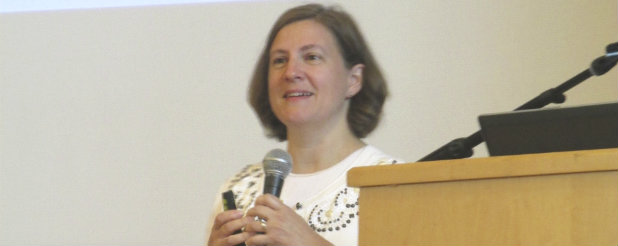Dr. Autumn Marshall, associate professor and academic chair of the nutrition department at Lipscomb University, delivered the final plenary address of the 2015 SENCER Summer Institute. Her presentation, “A Little Bit of Leaven,” explained the three “strands” of Lipscomb’s SENCER work: integrated science courses on campus, the Introduction of an associate’s degree at the Tennessee Prison for Women, and competency-based education.
The first strand, Lipscomb’s work with integrated science, condensed a three-course sequence into two courses, and led to general education reform at the University. The two integrated science courses, team-taught by two faculty members, are Biology and Chemistry, and Physics and Nutrition. The success of these courses led to the establishment of a general education capstone course called “Engagements,” which blends together several disciplines.
The second strand is the University’s work with inmates at the Tennessee Prison for Women in the Lipscomb Initiative For Education (LIFE) Program. The program results in Associate of Arts degrees for inmates who successfully complete it. Autumn shared the story of the first cohort of 9 inmates who completed the program, which included a SENCERized physical science course, blending physics and nutrition. Though the same course was taught with students at the University as well as the prison, teaching at the prison required different execution, and required faculty to overcome challenges such as the lack of internet access among inmates, and the inability to bring metal objects and substances deemed “risky” into the prison.
Despite these challenges, evaluations of the course and the program showed that students at the University and in the prison had improved attitudes toward science and comfort in working with complex ideas after taking the course. Autumn also shared television coverage of the first LIFE students’ graduation.
The final strand of Lipscomb’s SENCER work is competency-based education, where students’ life experience, personal skills and other informal education is converted into credits at a learning institution. Using the Polaris Competency Model to evaluate students in the University as well as the prison, Lipscomb found that on average, students in the University setting had 15-18 credit hours worth of competence credits, where students in the prison had 30, equalling two semesters of a normal college course load. These credits are now able to be applied toward any adult degree program at Lipscomb, opening further opportunities to the LIFE students.
For more information on the presentation, you can view Autumn’s slides and listen to a recording of her plenary.

